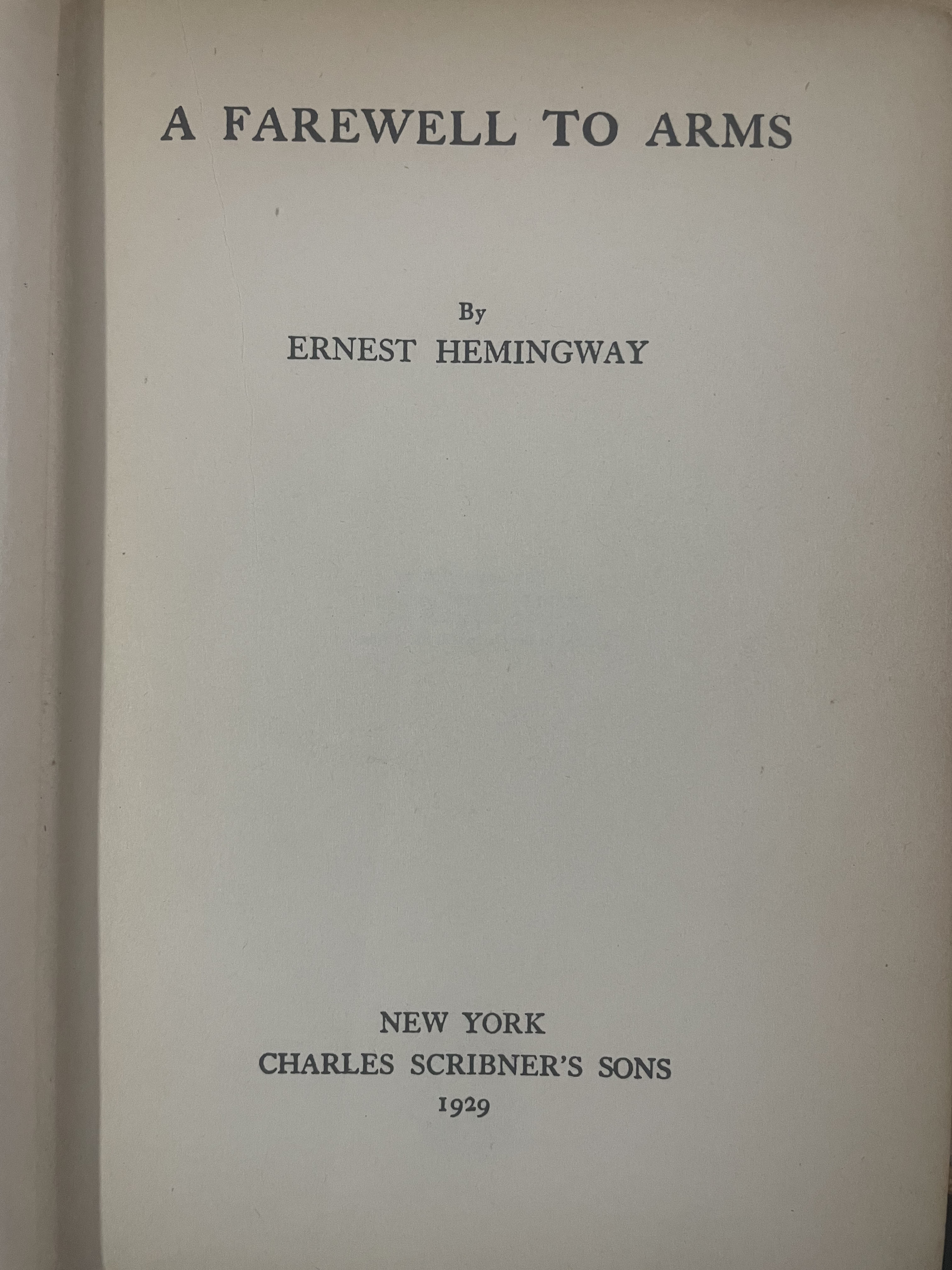The Farewell to Arms

About
Summary
Exquisite
TOC
Details
Related
URL
Images
Overview
A Farewell to Arms, a novel by Ernest Hemingway, unfolds during the Italian campaign of World War I. Published in 1929, it's a first-person narrative told by Frederic Henry, an American serving as a lieutenant in the ambulance corps of the Italian Army. The story centers on his war experiences and his love affair with Catherine Barkley, an English nurse.
Amidst the war's violence, Henry and Catherine seek solace in each other. Henry is wounded and recovers in a Milan hospital where their bond deepens. Upon his return to his unit, the disastrous retreat after the Battle of Caporetto leads to Henry's disillusionment.
Witnessing the chaos of retreat and the execution of officers, Henry deserts the army to reunite with Catherine. They escape to Switzerland, seeking refuge from the war where they attempt to build a peaceful life. Catherine becomes pregnant, but their hopes are shattered when she experiences a difficult labor and dies along with the baby. Henry is left alone, facing the futility of life and love.
Key Themes
War and Disillusionment: The novel portrays the brutal realities of World War I, depicting its violence and chaotic nature. Henry's experiences lead to disillusionment, causing him to desert. Hemingway captures the psychological impact of war, showcasing the loss of innocence.
Love and Loss: Henry and Catherine's relationship offers refuge, but it is marked by tragedy. The novel explores love, passion, and the pain of loss.
Mortality and Existentialism: The inevitability of death looms large throughout the novel. The deaths of Catherine and her baby underscore the fragility of life. Hemingway delves into existential themes, questioning the meaning of existence.
Hope and Courage: Despite despair, the novel offers glimpses of hope. Henry's love for Catherine fuels his desire to survive. The novel highlights personal connections and the resilience of the human spirit.
Cultural Significance
Reflection of the Lost Generation: The novel captures the disillusionment experienced by those who came of age during World War I. Hemingway's portrayal of Henry reflects the pathos of this generation.
Realism and Understatement: Hemingway's writing style revolutionized modern literature. His ability to convey emotions through understated language influenced writers. A Farewell to Arms realistically depicts war.
Influence on War Literature: A Farewell to Arms set a precedent for future war novelists. Hemingway's novel established a cynical attitude toward war and violence in literature.
Exploration of Universal Themes: Beyond its historical context, A Farewell to Arms explores themes of love, loss, and the human condition. The novel's exploration of mortality continues to resonate with readers.
Adaptations and Popular Culture: A Farewell to Arms has been adapted into plays, films, and television miniseries, solidifying its place in popular culture.
Effects on Society
Challenging Traditional Values: The novel challenged traditional notions of heroism and patriotism. By portraying the conflict as senseless, Hemingway undermined the romanticized view of war.
Promoting Anti-War Sentiment: A Farewell to Arms contributed to the growing anti-war sentiment in the interwar period. Its depiction of combat helped to galvanize public opinion against future conflicts.
Influencing Social Attitudes: The novel's exploration of love and existentialism influenced social attitudes toward relationships. Its portrayal of unconventional relationships challenged societal norms.
Stimulating Literary and Artistic Expression: A Farewell to Arms inspired a new wave of literary and artistic expression reflecting the disillusionment of the post-World War I era.
Fostering Dialogue and Reflection: A Farewell to Arms fostered dialogue on the human condition and the consequences of war. Its themes continue to be relevant, prompting discussions about conflict and empathy.
Conclusion
A Farewell to Arms is a work of American literature that explores war, love, and the human condition. Its cultural significance lies in its reflection of the Lost Generation and its realistic portrayal of World War I. The novel's impact is evident in its challenge to traditional values and its promotion of anti-war sentiment.
Title
The Farewell to Arms
Author
Ernest Hemingway
Name of Publisher
Charles Scribner?s Sons New York
Publish Date
1929
Subject
The novel tells the story of Frederick Henry, an American ambulance driver in World War I, and his love affair with Catherine Barkley.
Vintage
1901-1947
Number of Pages
355
Category
Literary
Sub Category
Classic
Rarity
RARE
